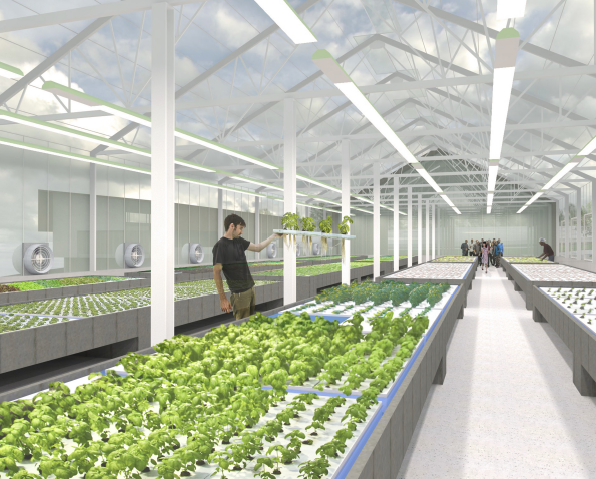By Paul Anderson
Today, the White House released its annual Economic Report of the President. The report included a sidebar on “Distressed Communities and the Tax Cuts and Jobs Act that mentions the New Markets Tax Credit (see right) and then later goes on to describe the Invest in Opportunity Act (IOA).
While the IOA and New Markets Tax Credit (NMTC) target many of the same census tracts, no question that the NMTC and the IOA serve different but complementary purposes. Opportunity Funds will make equity investments in businesses. Community Development Entities mostly use the NMTC to provide debt to businesses and community facilities. That’s why we are so excited see these programs working side by side.
We appreciate the White House highlighting the NMTC’s success, but I do feel the need to correct a couple of misconceptions about the NMTC, real estate, and entrepreneurship.
First of all, we should not be too quick to dismiss the value of construction and rehabilitation projects in creating jobs and opportunity. Construction jobs – while often temporary – typically provide good pay and benefits. The construction industry – perhaps more than any other industry – offers apprenticeship and on the job training, providing an avenue for advancement. Construction spurs secondary economic activity (down the supply chain) that is easy to identify and measure. While an increase in construction income and the resulting macroeconomic boost to the economy may be temporary, real estate investment creates or improves a tangible asset that will serve a community for decades to come.
White House Comment on Distressed Communities and the Tax Cuts and Jobs Act
“The Federal government has an active set of policies to encourage investment and job creation in distressed communities, including Empowerment Zones, Enterprise5 Communities, Renewal Communities, and New Market Tax Credits (NMTC). The NMTC—arguably, the most successful of these programs—is structured to induce “patient” capital, providing substantial investment incentives if assets are held over a full seven years. As a result, although the majority of NMTC recipients would not have otherwise invested in the benefiting community, real estate has been the investment of choice, both because real estate returns are naturally long-run and because these investments clearly complied with NMTC regulations (Bernstein and Hassett 2015). But real estate is likely not the most effective tool for job growth, and the program is reportedly difficult for entrepreneurs to navigate.”
Purpose of NMTC-Financing (2003-2016)
Secondly, it is a misconception that the NMTC almost exclusively finances construction. While a majority of NMTC projects (roughly 65%) involve some sort of construction or rehabilitation, most NMTC real estate projects also involve the provision of working capital, purchase of equipment, or other financing supporting for an operating business. When you look past the project level and trace NMTC transaction activity to the primary purpose of each financial note, the share of real estate vs non-real estate is about even (see table to the right).
Finally, while it is true that the NMTC does not often provide direct financing to entrepreneurs, the program has been used to capitalize small business loan pools supporting emerging businesses and startup. And increasingly, the NMTC is financing projects that support the entrepreneurial ecosystem. In 2016, according to NMTC Coalition survey data, about 6% of projects financed were business incubators, creative office space, and other physical infrastructure that helps accelerate the development of small businesses, support aspiring culinary entrepreneurs, or foster social enterprise. Below find a few of the many examples across the country.
Supporting the Entrepreneurial Ecosystem
The Highlander Accelerator, Omaha, NE

The Highlander Accelerator in Omaha, Nebraska, rejuvenated the blighted former site of a failed 23-acre public housing complex demolished in 2009.
The Accelerator offers rents 50 percent below the market rate to facilitate a carefully selected mix of nonprofit and commercial tenants that maximize impact on the educational opportunities, health, and well-being of disadvantaged neighborhood residents. The facility includes over 17,500 SF for Whispering Roots (right), a nonprofit aquaponics organization that will produce fish and leafy greens in a high-tech “closed loop” system.
Studebaker Innovation Center/Renaissance District, South Bend, IN
Adaptive reuse of a former Studebaker automobile manufacturing facility (built between 1923 and 1946) into office, education, incubator, advanced manufacturing and training space. Created 634 full-time equivalent jobs and 131 construction jobs.An Interview with Andrew Wiand, Executive Director of enFocus, at the Renaissance District
Supporting Culinary Entrepreneurs
R House: Baltimore’s Emerging Chefs
BOOM! Health Project Includes Workforce Training Cafe
Enterprise Community Partners and Chase financed a mixed-use project in the Bronx that includes, among other things, a café called BOOM!Café, which will double as a community space and workforce training center on the ground floor. BOOM is working with Catalyst Kitchen, an incubator of food service social enterprises based in Seattle, to establish a training program and business model for the café.Learn more about the project.




